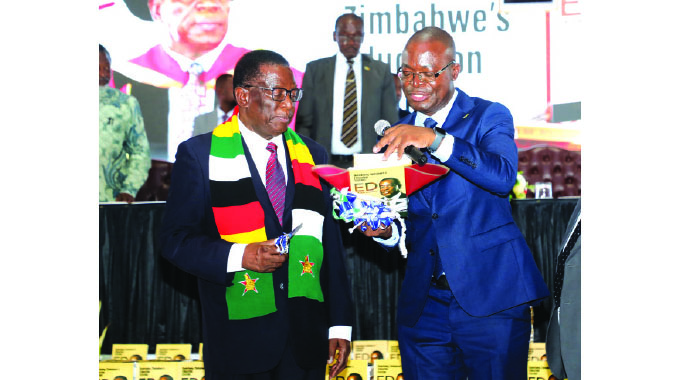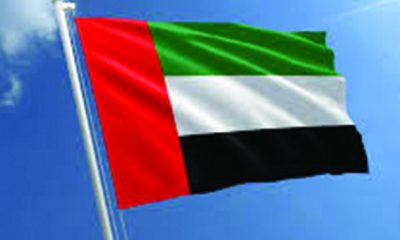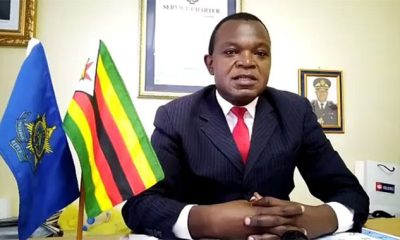Elliot Ziwira-Senior Reporter
As the countdown to Zimbabwe’s 44th birthday reaches the homestretch, it is only apt to reflect on the strides the country has covered in its educational journey.
Deliberately skewed in favour of white Rhodesians, the colonial education system was a subtle enterprise designed to perpetuate the African people’s poverty. Never were Africans given opportunities to acquire skills that would aid them in changing stations in life.
At independence, African governments inherited an already poisoned structure, which, unfortunately, they pivoted their curricula on.
It is not uncommon now, to come across hordes of degree and diploma holders who can hardly tell six from nine, having been conditioned to construe Western education forms as gateways to the good life.
Astoundingly, imbibing this alien form of knowledge has created more educated, but less learned graduates, incapable of turning around the fortunes of their communities.
Having simply consumed data, they lack the requisite skills to interrogate and interpret facts as informed participants; nor do they have the ingenuity to plunge into the unknown and emerge wiser.
Therefore, the realisation of the fundamental import that education plays in moulding the complete individual capable of going beyond literacy, to also interact with practical skills required in opening up opportunities for livelihoods routes, at Independence, the Government revamped the education system.
The starting point was the repealing of the discriminatory Rhodesian Education Act of 1979, which made education free and compulsory to white Rhodesian children. Through the Education Act of 1987, discriminatory legislation aimed at keeping blacks down was routed.
Peeping into the colonial safari
The Rhodesian conspiracy was to keep blacks in “educated bliss” through a system which created labourers, semi-skilled workers and supervisors in support of white capital.
The objective of bottlenecking in formal education was to restrict blacks to careers that would not make them directly compete with white settlers. Ironically, Africans took pride in the acquisition of such bookish knowledge, which could not change outcomes for their lot.
Godfrey Huggins, known for institutionalising apartheid in Rhodesia when he became Prime Minister in 1933, buttressed this philosophy in a speech on March 30, 1938.
He said: “This (good education) is essential if our children are to be given equal opportunity for progress and keep their position of influence and power. It will prevent the creation of a poor white class.
“Constant adjustment will take place and the result should be a system of education Rhodesian in character, and essentially suited to our own requirements” (Chigwedere, 2001:3).
Succinctly summing it up, Huggins drives home the viewpoint that despite the garb the scheme came in, it wasn’t suited to blacks’ requirements.
They were closed out of spaces in agriculture, engineering and mechanics. Access to university education was also tapered.
It was not lost on settlers that the land was crucial as a means of production, therefore, they barred blacks access to agricultural institutions like Blackfordby.
Arguing for the 1930 Land Apportionment Bill in the Rhodesian Parliament, HU Moffat, Rhodesia Prime Minister then, maintained that the native was a labourer, who “will more and more tend to settle down with his master and remain on with his master’s son when he takes over and so on — permanent servants in the employ of the estate” (Chigwedere, 2001:2).
Milestones at a glance
After achieving the initial brief of attaining literacy, and moving to ensure that previously disadvantaged black Zimbabweans’ appetite for primary and secondary education was satiated, the Government shifted attention.
The focus now was creation of more openings in vocational, polytechnic and university training to close the widening chasm between knowledge and skills.
Since knowledge is always in a state of flux, the expedition to narrow the gap remained a continuous process, hence the need to create a ministry separate, but complementary and interconnected to the Ministry of Primary and Secondary Education.
To keep abreast with sweeping technological drifts, the Ministry of Higher and Tertiary Education, later merged with the Department of Science and Technology in the Office of the President to become the Ministry of Higher and Tertiary Education, Science and Technology Development; and now Higher and Tertiary Education, Innovation, Science and Technology Development.
At Independence in 1980, Zimbabwe had one university, University of Zimbabwe, formerly University of Rhodesia, established in 1952 as University College of Rhodesia and Nyasaland.
In the 1960s and 1970s, the institution had an enrolment of 300 students, only a third of them being blacks, while less than a dozen were Asians and Coloureds.
The hunger for primary and secondary education having been satiated, the need arose to equally respond to the corresponding appetite for vocational, technical and mechanical training.
Initiatives like the Zimbabwe Foundation for Education with Production (ZIMPEF), which emphasised the provision of education with specific vocational training programmes, thus bridging the gap between knowledge and skills, were commenced.
The demand for teachers was mitigated through the Zimbabwe Integrated National Teacher Education Course (ZINTEC), aimed at providing adequate teachers to cope with expansion in enrolment, and the Associate Teacher Programme. The later scheme was an intermediate state towards the Certificate in Education for those with O-Levels and teaching as untrained teachers.
The drive saw the birth of Morgan Zintec Teachers College in 1981 with a bias towards developing teachers prepared to be deployed to rural areas. Teachers were also upgraded to meet the changing trends in education through the introduction of courses such as the Bachelor of Education and Master of Education at the University of Zimbabwe.
With numbers of school-leavers increasing yearly, the Government realised the need to absorb the bulk of them not only in teachers’ colleges, but other tertiary institutions offering vocational, technical, mechanical and university training. Hence, more such institutions were established through the Government’s efforts and mobilisation of private players.
Polytechnic colleges established in 1926 (Harare Polytechnic) and 1927 (Bulawayo Polytechnic) to offer technical expertise to whites, were expanded after 1980 to train previously marginalised blacks.
Apprentice programmes were started in collaboration with industry, which gave scores of Zimbabweans the opportunity to become Class One journeymen. Armed with requisite skills, blacks could now occupy positions previously reserved for Rhodies.
The system in use then was Education 3.0 (HTE), modelled on Higher and Tertiary Education, focusing more on teaching, research and community service.
In 1992, the University of Zimbabwe’s enrolment at first year level was 2 400 up from the 1964 total student population of 300. However, the enrolment fell short of the 4 400 qualifying A-Level hopefuls.
In 1998, there were 14 Government institutions of higher learning, two of which being universities; University of Zimbabwe and the National University of Science and Technology, countrywide, and 250 private colleges where fees were steep.
By 1998, there were four universities, two State and two private ones, with a total enrolment of 10 000. Teachers, technical and agricultural colleges had an enrolment of 33 000 in the same year, up from 2 829 in 1989.
So great were the strides in tertiary education expansion, that by 1999 all the 10 000 A-Level candidates were assured of getting acceptance into a degree programme in 2000 as the number of degree awarding institutions rose to 12.
Today, Zimbabwe boasts 13 polytechnics, 13 teachers’ colleges, 43 vocational training centres, and up to 16 quasi-Government and independent research institutions, in addition to 13 State universities and seven private ones.
Twelve of the 20 vocational training colleges established in 1999 were to be in major cities, with Harare and Chitungwiza getting four, Bulawayo two, and Masvingo, Hwange, Chinhoyi, Marondera, Mutare and Gweru one each.
What necessitated the move was that about 300 000 school-leavers were entering the job market each year.
To cater for those with disabilities, the Danhiko Project was established in 1981. The Education Act of 1996 and the Disabled Persons Act of 1996 expanded the fundamental right to education regardless of race, religion, creed, and disability.
Keeping up with shifting trends: Education 5.0
Officially launching “Re-defining Zimbabwe’s Education System: ED Mnangagwa’s Vision and Transformational Leadership”, a book which highlights the centrality of education in national development, in February 2024, President Mnangagwa underlined that culture, heritage and education are crucial in fostering identity and heightening industrialisation and modernisation.
This, he said, is the bedrock for economic expansion, peace, equality and poverty eradication.
“Education and knowledge have always been the cornerstone of progress, a beacon of hope and a sustainable pathway to a brighter-prosperous future, including in our beloved motherland, Zimbabwe,” said the President.
The President’s remarks are significant in situating the essence of curricula in moulding individuals capable of interpreting consumed data and using it to effectively engage with issues impacting their communities.
In Zimbabwe, it is the Government, through its policymakers, which determines the design of the curriculum to be used in schools and other State-controlled institutions of higher learning.
The designing of the curriculum has political connotations, since it tends to follow political traits. As such, the Rhodesian structure of education tended to be biased against the black majority.
Such bias puts the curriculum in constant motion as the need to perpetually monitor it arises. In institutions of higher learning, the curriculum is determined, not only by social forces or the defining traits of what constitutes knowledge or lack thereof, but by human growth and development.
It suffices that societal concerns about knowledge are merged with commercial, economic and industrial concerns; determining the competence of the individual required to captain education, commerce and industry, as technology is in constant motion, and mores and values are always changing. Therefore, to keep up with the fluidity of knowledge and address skills deficits that come with curricula rigidity, the Ministry of Higher and Tertiary Education, Innovation, Science and Technology Development led by Professor Amon Murwira, revamped the programmes bias by replacing Education 3.0 with Education 5.0.
Education 3.0 (HTE) had a colonial tinge; therefore, it had shortcomings in addressing the need to produce goods and services — key variables in economic growth. The system was modelled on Higher and Tertiary Education, focusing more on teaching, research and community outreach.
The Rhodesian colonial project derived its tilt in the imbroglio that came with presumed knowledge meant to feed the capitalist machinery of oppression and plunder. As a result, despite having a 94 percent literacy rate, research shows that Zimbabwe is at 38 percent in terms of skills acquisition.
The ministry designed a five-mission education model of teaching, research, community outreach, innovation and industrialisation aimed at the production of goods and services.
The philosophy behind Education 5.0 is that no education system functions effectively if it is divorced from the reality of the community it is meant to transform, hence the drive for a heritage-based inclination.
The prerequisite to lead the pack comes, not only with ingenuity, but understanding of how others play their game, and aim to beat them at it.
In that vein, Education 5.0 will help in keeping up pace, retooling and reviving industry using the latest technology.
It may seem an uphill task owing to other challenges, mainly emanating from economic sanctions imposed on Zimbabwe. However, where there is a will, there is always hope, and where knowledge is not monopolised as a tool to oppress others the greater good eventually wins.
There is always a starting point.
In 2019, the ministry launched innovation hubs. These centres are meant to convert academic knowledge into tangibles through research and development.
As Zimbabweans celebrate Independence Day on April 18 this year for the 44th time, it is crucial, therefore, to acknowledge the milestones achieved in the education sector, particularly in the last five years. Freedom begins with thwarting the colonial conspiracy to keep Africans poor by merely educating them, without offering learning opportunities that would define the nature of knowledge acquired in relation to practical skills required for social, economic, cultural, vocational and political growth.




















